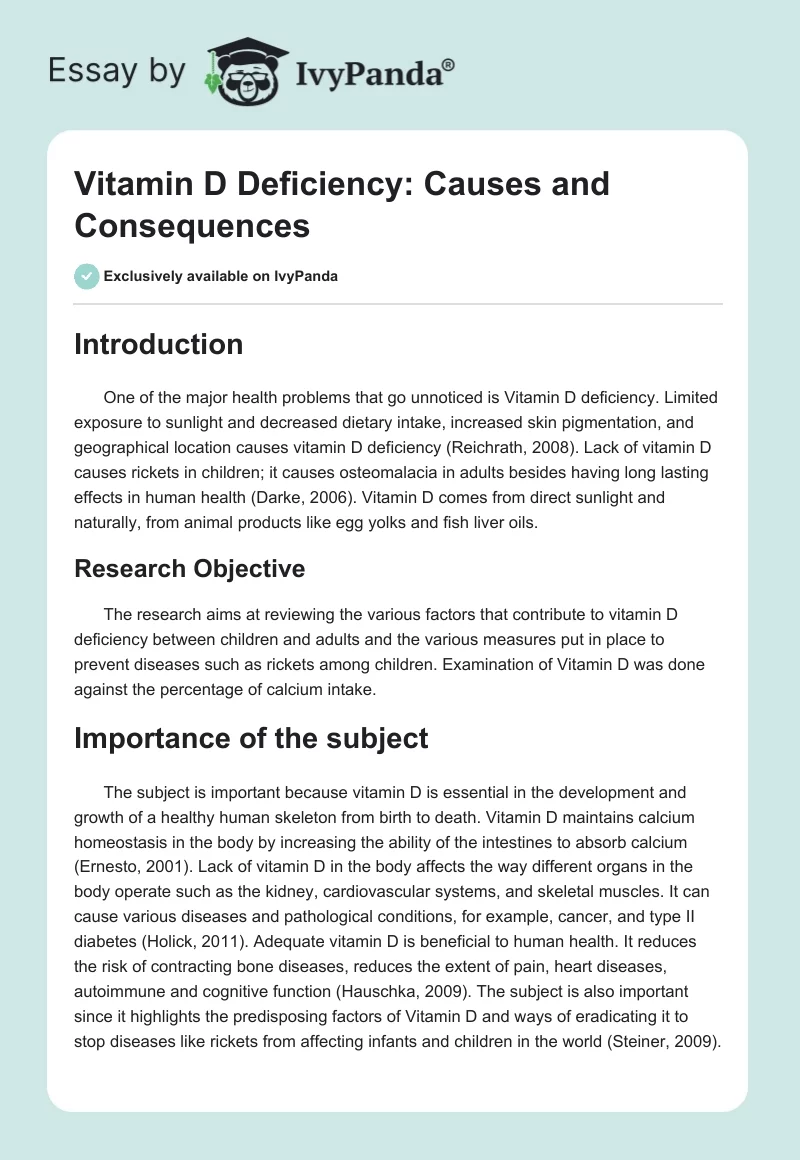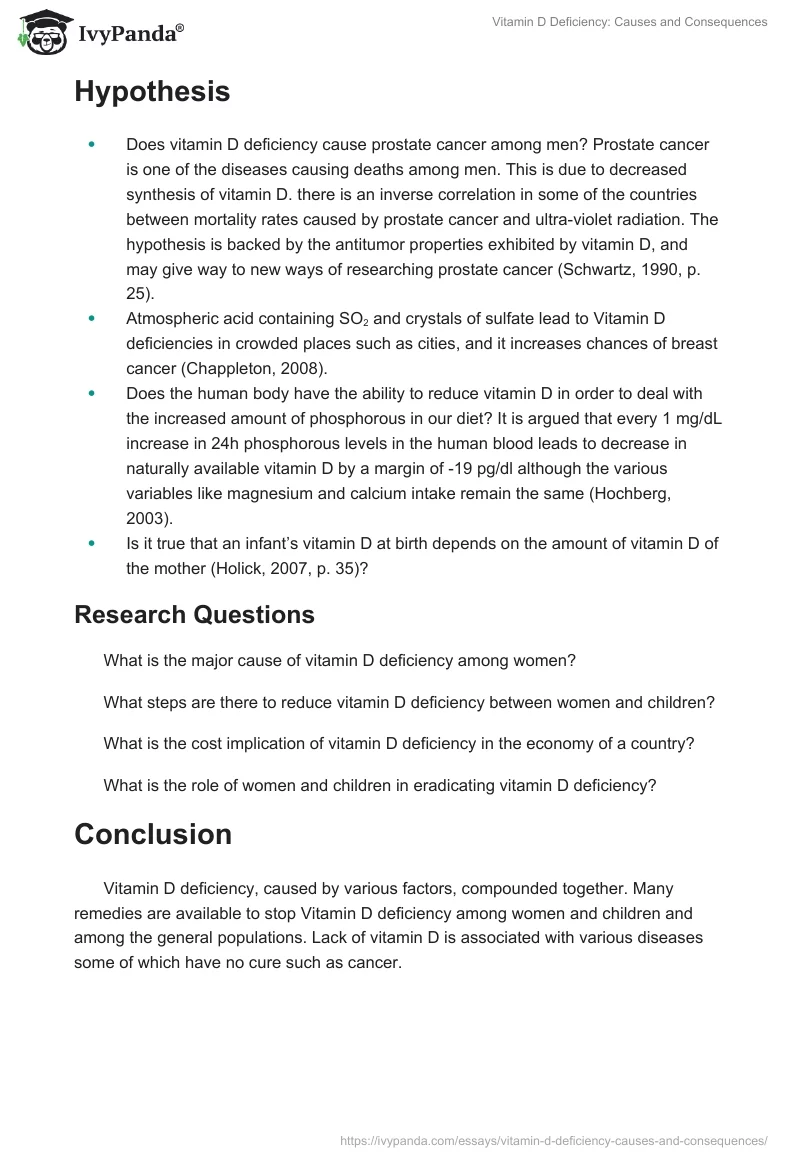Introduction
One of the major health problems that go unnoticed is Vitamin D deficiency. Limited exposure to sunlight and decreased dietary intake, increased skin pigmentation, and geographical location causes vitamin D deficiency (Reichrath, 2008). Lack of vitamin D causes rickets in children; it causes osteomalacia in adults besides having long lasting effects in human health (Darke, 2006). Vitamin D comes from direct sunlight and naturally, from animal products like egg yolks and fish liver oils.
Research Objective
The research aims at reviewing the various factors that contribute to vitamin D deficiency between children and adults and the various measures put in place to prevent diseases such as rickets among children. Examination of Vitamin D was done against the percentage of calcium intake.
Importance of the subject
The subject is important because vitamin D is essential in the development and growth of a healthy human skeleton from birth to death. Vitamin D maintains calcium homeostasis in the body by increasing the ability of the intestines to absorb calcium (Ernesto, 2001). Lack of vitamin D in the body affects the way different organs in the body operate such as the kidney, cardiovascular systems, and skeletal muscles. It can cause various diseases and pathological conditions, for example, cancer, and type II diabetes (Holick, 2011). Adequate vitamin D is beneficial to human health. It reduces the risk of contracting bone diseases, reduces the extent of pain, heart diseases, autoimmune and cognitive function (Hauschka, 2009). The subject is also important since it highlights the predisposing factors of Vitamin D and ways of eradicating it to stop diseases like rickets from affecting infants and children in the world (Steiner, 2009).
Hypothesis
- Does vitamin D deficiency cause prostate cancer among men? Prostate cancer is one of the diseases causing deaths among men. This is due to decreased synthesis of vitamin D. there is an inverse correlation in some of the countries between mortality rates caused by prostate cancer and ultra-violet radiation. The hypothesis is backed by the antitumor properties exhibited by vitamin D, and may give way to new ways of researching prostate cancer (Schwartz, 1990, p. 25).
- Atmospheric acid containing SO2 and crystals of sulfate lead to Vitamin D deficiencies in crowded places such as cities, and it increases chances of breast cancer (Chappleton, 2008).
- Does the human body have the ability to reduce vitamin D in order to deal with the increased amount of phosphorous in our diet? It is argued that every 1 mg/dL increase in 24h phosphorous levels in the human blood leads to decrease in naturally available vitamin D by a margin of -19 pg/dl although the various variables like magnesium and calcium intake remain the same (Hochberg, 2003).
- Is it true that an infant’s vitamin D at birth depends on the amount of vitamin D of the mother (Holick, 2007, p. 35)?
Research Questions
What is the major cause of vitamin D deficiency among women?
What steps are there to reduce vitamin D deficiency between women and children?
What is the cost implication of vitamin D deficiency in the economy of a country?
What is the role of women and children in eradicating vitamin D deficiency?
Conclusion
Vitamin D deficiency, caused by various factors, compounded together. Many remedies are available to stop Vitamin D deficiency among women and children and among the general populations. Lack of vitamin D is associated with various diseases some of which have no cure such as cancer.
References
Chappleton, N. (2008). Dietary Reference Intakes for Calcium and Vitamin D. Melbourne: National Academies Press.
Darke, J. (2006). Vitamin D deficiency and osteomalacia. New York: H.M.S.O.
Ernesto, I. (2001). Calcium Homeostasis. London: Springer.
Hauschka, R. (2009). Nutrition. New York: Rudolf Steiner Press.
Hochberg, Z. (2003). Vitamin D and Rickets. Boston: Karger Publishers.
Holick, M. (2007). Vitamin D Deficiency. Web.
Holick, M. (2011). Vitamin D: Physiology, Molecular Biology, and Clinical Applications. London: Springer.
Reichrath, J. (2008). Sunlight, Vitamin D and Skin Cancer. London: Springer.
Schwartz , H. (1990). Is vitamin D deficiency a risk factor for prostate cancer? (Hypothesis). Web.
Steiner, R. (2009). Nutrition: Food, Health, and Spiritual Development. New York: Rudolf Steiner Press.


